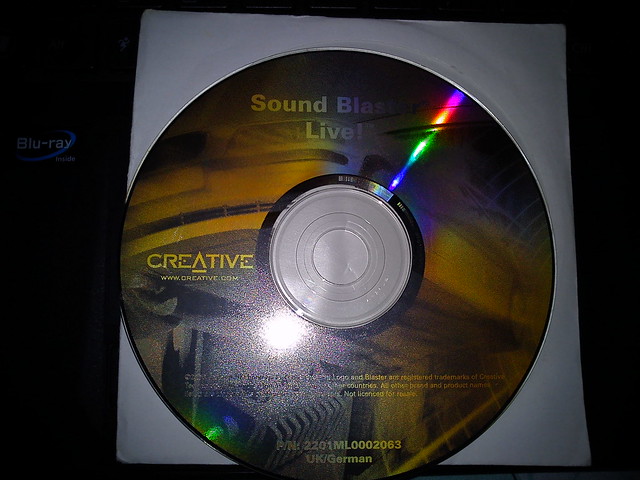Creative SoundBlaster Live! 5.1.iso bom - Creative Labs SoundBlaster Live 7.1 Sound question. Make sure the correct CD is being used, the Audigy card was a refurb. Sound Blaster Drivers Sound Blaster AWE64. The Sound Blaster is a series of sound cards from Create Labs. For a time, the Sound Blaster was considered a de-facto standard for DOS based gaming. Initially it competed against the uncommon IBM Music Feature card, and the Adlib cards.
Creative Music System The history of Creative sound boards started with the release of the Creative Music System ('C/MS') board in August 1987. It contained two circuits, which, together, provided 12 voices of square-wave bee-in-a-box stereo sound plus some noise channels. These circuits were featured earlier in various popular electronics magazines around the world. For many years Creative tended to use off-the-shelf components and manufacturers' reference designs for their early products. The various integrated circuits had white or black paper sheets fully covering their top thus hiding their identity. On the C/MS board in particular, the Philips chips had white pieces of paper with a fantasy CMS-301 inscription on them; real Creative parts usually had consistent CT number references.
Surprisingly, the board also contained a large 40-pin PGA (Creative Technology Programmable Logic) integrated circuit, bearing a CT 1302A CTPL 8708 inscription and looking exactly like the DSP of the later Sound Blaster. Presumably, it could be used to automate some of the sound operations, like. Sound Blaster 1.0 The first board bearing the Sound Blaster name appeared in 1989. In addition to Game Blaster features, it had an 11-voice using the chip, also known as OPL2.

It provided perfect compatibility with the then market leader sound card, which had gained support in PC games in the preceding years. Creative used the 'DSP' acronym to designate the digital audio part of the Sound Blaster. This actually stood for Digital SOUND Processor, rather than the more common, and was really a simple micro-controller from the family (supplied by Intel and, among others). It could play back at up to 23 (approx. Quality) and record at up to 12 kHz (approx.

The sole DSP-like feature of the circuit was decompression. An early 8-bit Sound Blaster The original card lacked an filter, resulting in a characteristic 'metal junk' sound. (This was rectified with the addition of two user-selectable filters in the later Sound Blaster Pro card.) It also featured a joystick port and a proprietary interface. In spite of these limitations, in less than a year, the Sound Blaster became the top-selling expansion card for the PC. It achieved this by providing a fully AdLib-compatible product, with additional features, for the same, and often a lower, price. The inclusion of the game port, and its importance to its early success, is often forgotten or overlooked. PCs of this era did not include a game port.